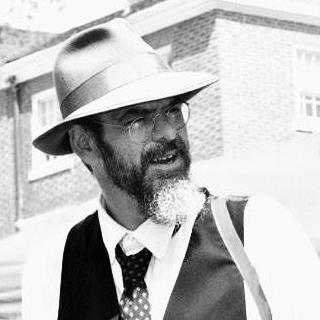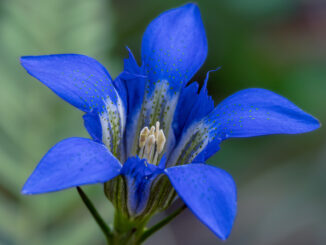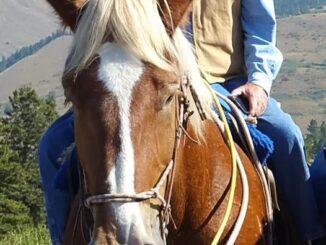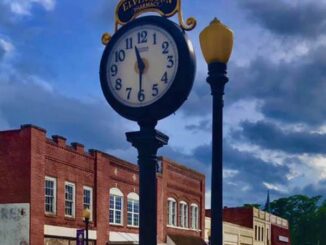
Most of us have seen them as we drive through the country; groves of trees, sometimes tangled with honeysuckle, grapevines and wisteria, poison ivy and persimmons, surrounded by plowed rows of next year’s hopes and dreams.
We were on the way to visit my wife’s family the other day when we passed one such tangled mess of woods that I had visited years ago. It was a classic example of nature healing its wounds and taking back its own from man’s temporary domination.
This particular grove was once the home of a grumpy, but personable old fellow who bordered on hermit status. I visited him once out of curiosity, after shooing a wayward puppy off the highway. My appreciation for his massive hoard of rusty old tools, as well as saving the life of his dog, convinced him to tolerate me for a bit. One could not see his two-room house from the paved road, due to a wall of wild green fighting for superiority with some beautiful longleaf pines. How the home had electricity was beyond me, but he did indeed have power. In a strange way I envied him somewhat – he had a very simple, almost stoic existence, with a few dogs, a handful of cats, and no television. He had a woodstove for heat and cooking, and was ambivalent about bathing, since he rarely saw anybody anyway, and by his own admission, he didn’t really care one way or the other for people. There were no signs of alcohol, but there was running water, a pumphouse surrounded by the carcasses of failed pumps, and a coffee pot.
I do not recall his name, if he ever even told me – it was something like Carl or Archie or Bill, a workingman’s name me – but I did admire, even covet, the old iron that he had gathered through untold years of living there. I do know his family homeplace burned, and he ended up with the land and little else, so he converted a shed into a home.
There came a day when that home burned, too; I had been gone for several years, and happened down the same highway. I was blacksmithing then, and thought to risk the gentleman’s shotgun for advice and possible some good wrought iron. But the shack was gone, as was most of the iron. There were odd things scattered about, huge wrenches, pieces of rebar and wrought stock, narrow gauge rails and pulleys, but the whole place had burned and was being cleaned out. A longlost family member had come and kidnapped the old man, putting him in a nursing home where I am sure there were rules about dogs and bathing. On his death, someone apparently dropped a match at his old homestead, and the result was history.
The pines remained, however, and as we drove past them the other day, a good 20 years since I found the blackened remains of the Iron Kingdom, honeysuckle and morning glories were fighting with the pines to see who would finally be the new rulers.
Even with modern farming and drainage and the need to plant almost every available spot of ground, there are still plenty of these little groves around. Sometimes they are home to a forgotten family burying ground that someone someday intends to clean up; other times, there’s the glint of green-tinted water that can be seen if the sun is at the right angle and the trees are losing their leaves.
As a kid, that shine was what I so eagerly sought, since it often meant a forgotten place to fish, and folks were more casual about trespassing kids with fishing poles back then. Old stock tanks, irrigation ponds, even the occasional trash pit or clay hole could be found that contained some hungry panfish or a scant few bass. How they managed to survive was always a mystery to me, since the water was often shallow enough that you could easily see the fish cruising along in a huge, muddy, algae-filled fishbowl carpeted with decades-old pine straw and surrounded by blackberry brambles. Whether the creel was ever worth the effort was always debatable, I guess, but we all know fishing ain’t always about catching fish.
Another such ever-growing thicket of trees I regularly pass holds the shaky remains of what must have been a showplace of a Victorian Queen Anne style home, with double bay windows and gingerbread still tenaciously hanging onto the eaves where muscadines are slowly eating their way through the heart pine and hand-struck nails. I wonder how such a fancy home ended up in such an out of the way place, but then again, there was a time when places like Yamacraw and Lagoon and Council and Bug Hill were thriving little villages, if not full-sized towns with dreams of someday becoming cities. I think it’s likely that decaying work of art with trees growing through the parlor was once nestled among several other homes, maybe a store or two and even a post office. It was a home that deserves lights and laughter and love, maybe a carefully-chaperoned couple on a front porch on a Sunday afternoon, with a Model T parked beside a restive dapple gray Tennessee Walker in polished leather and bright brass.
Sometimes those forgotten little groves hold architectural fossils of tenant homes and tired old falling down farmhouses, or barns with feed troughs chewed to disrepute by mules long since dead and buried. One such tangled place I visited – a Carolina Bay known for black fox squirrels – held a 1956 Buick, its interior long since rotten, the engine a rusted relic of eight cylinder glory. What glass remained after its initial venture into woods had fallen victim to bored hunters, and when they were finished with the glass, they started in with rifle and shotgun on the body. One of my church members later told me the car had rolled in there after a high speed car crash, and the owner simply left it there to rot.
I’ve seen two, maybe three such groves that were the homes to forgotten churches, houses of worship where people neglected to stay in the word and split, leaving behind the simple country chapels that had served generations that now lay neglected in sourgrass-covered cemeteries with burned wooden markers and sand-blasted stones worn smooth with time. Maybe there’s a rusted wrought iron fence with a broken gate, but most often there’s just a river rock marking each corner of a small sad field of final resting places.
Sometimes, modern equipment is finally sent into battle against those isolated little roadblocks to straight furrows. When the timber or pulp market are up and the ground is dry, an ambitious logger will take a chance on a razor-thin profit margin and harvest the pines, oaks, gums and hickory. Sometimes, sadly, someone comes along with a big enough machine, and the forgotten piece of forest becomes a jumbled up burn pile that is ground and crushed to dust, leaving the grove to become part of a joke about “turning where the old bent oak tree used to be.”
Some signs will remain, though, with old pieces of iron consumed by a gum tree truck, or barbed wire puckering the bark of a hickory that once fed hogs, or scattered pieces of glass and china acting as reminders of when the grove was home to more than foxes, possums and squirrels.
Nature will reclaim that which was hers, but if you try real hard, you can find the things folks left behind that show the grove in the middle of the field holds much more than a bunch of forlorn trees.
Sometimes we never realize there’s an entire world hidden in that grove of trees, a world of history and dreams and mystery lost in the honeysuckle.























